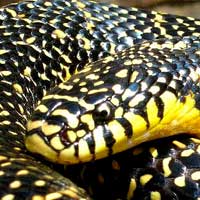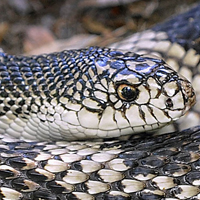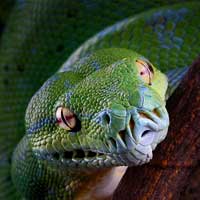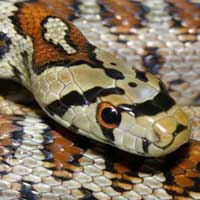Everything You Need to Know About the Inland Carpet Python
The scientific name of the Inland Carpet Python is Morelia spilota metcalfei, and it belongs to the Pythonidae family, which comprises non-venomous constricting snakes commonly referred to as pythons.
Scientific Name: Morelia spilota metcalfei
Snake Family: Pythonidae
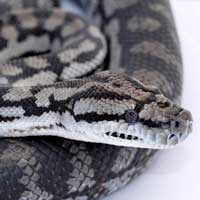
Introduction to the Inland Carpet Python
The Inland Carpet Python (Morelia spilota metcalfei) is a non-venomous snake native to the dry and semi-arid regions of Australia. Recognized for its striking patterns and calm temperament, this python is a subspecies of the Carpet Python and is highly adaptable to different environments. It is a popular choice among reptile enthusiasts for its manageable size and ease of care. This guide will explore everything about the Inland Carpet Python, including its habitat, diet, behavior, and care needs.
The Natural Habitat of the Inland Carpet Python
The Inland Carpet Python is well-adapted to arid and semi-arid environments, making its natural habitat unique among pythons.
- Geographic Range: Found throughout central and southern Australia, including regions of New South Wales, South Australia, and Victoria.
- Preferred Habitat: Rocky outcrops, woodlands, and grasslands.
- Climate: Dry with significant temperature fluctuations between day and night.
| Region | Habitat Type | Key Features |
|---|---|---|
| New South Wales | Woodlands | Scattered trees, moderate vegetation |
| South Australia | Rocky Outcrops | Stable temperatures, ample shelter |
| Victoria | Grasslands | Open spaces, abundant prey |
Diet and Feeding Habits of the Inland Carpet Python
The Inland Carpet Python is a carnivorous predator with a diet that varies based on its environment. Its dietary needs in captivity are easy to manage with proper knowledge.
- Natural Diet: Small mammals, birds, and reptiles.
- Feeding Frequency:
- Juveniles: Every 5-7 days for growth.
- Adults: Every 10-14 days depending on size and activity level.
- Captive Feeding Tips:
- Offer pre-killed, thawed rodents to ensure safety.
- Provide prey that matches the widest part of the snake’s body.
- Feed in a separate enclosure to prevent substrate ingestion.
Behavior and Temperament of the Inland Carpet Python
The Inland Carpet Python is known for its calm demeanor and adaptability. Understanding its behavior can enhance your experience as a keeper.
- Activity Patterns: Primarily nocturnal, with hunting and movement occurring at night.
- Defensive Behavior: Generally non-aggressive but may hiss or strike if threatened.
- Interaction with Humans: Tolerates handling well when acclimated gradually.
With proper care and handling, the Inland Carpet Python can become a docile and manageable pet.
Health and Lifespan of the Inland Carpet Python
The Inland Carpet Python can live 20-30 years in captivity with the right care. Maintaining its health requires attention to its environment and diet.
- Common Health Issues:
- Respiratory infections caused by low humidity or improper temperatures.
- Shedding problems (dysecdysis) from inadequate humidity.
- Obesity from overfeeding or lack of exercise.
- Preventive Measures:
- Maintain humidity levels between 50-60%.
- Provide a temperature gradient with a basking spot of 88°F-92°F.
- Ensure regular health checks and a clean enclosure.
Reproduction and Breeding of the Inland Carpet Python
The Inland Carpet Python is oviparous, laying eggs during the breeding season. Successful reproduction in captivity requires attention to environmental cues and conditions.
- Mating Season: Late winter to early spring.
- Clutch Size: 10-30 eggs per clutch.
- Incubation Period: 60-70 days at temperatures of 86°F-88°F.
- Breeding Tips:
- Simulate seasonal temperature changes to encourage breeding.
- Provide a nesting box with moist substrate for egg-laying.
- Monitor incubation conditions closely for healthy hatchlings.
Handling and Caring for an Inland Carpet Python
Handling and caring for an Inland Carpet Python requires knowledge and patience. With proper care, these snakes can thrive in captivity.
- Enclosure Requirements:
- Minimum size: 4’ x 2’ x 2’ for adults.
- Include secure hides, climbing branches, and a water dish for soaking.
- Maintain a secure enclosure with proper ventilation.
- Handling Tips:
- Support the snake’s entire body during handling.
- Avoid handling during shedding or immediately after feeding.
- Wash hands before and after handling to maintain hygiene.
By meeting their specific needs, the Inland Carpet Python can become a rewarding and fascinating addition to your reptile collection.



